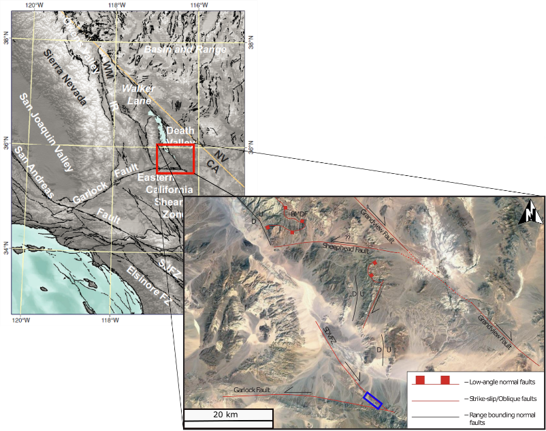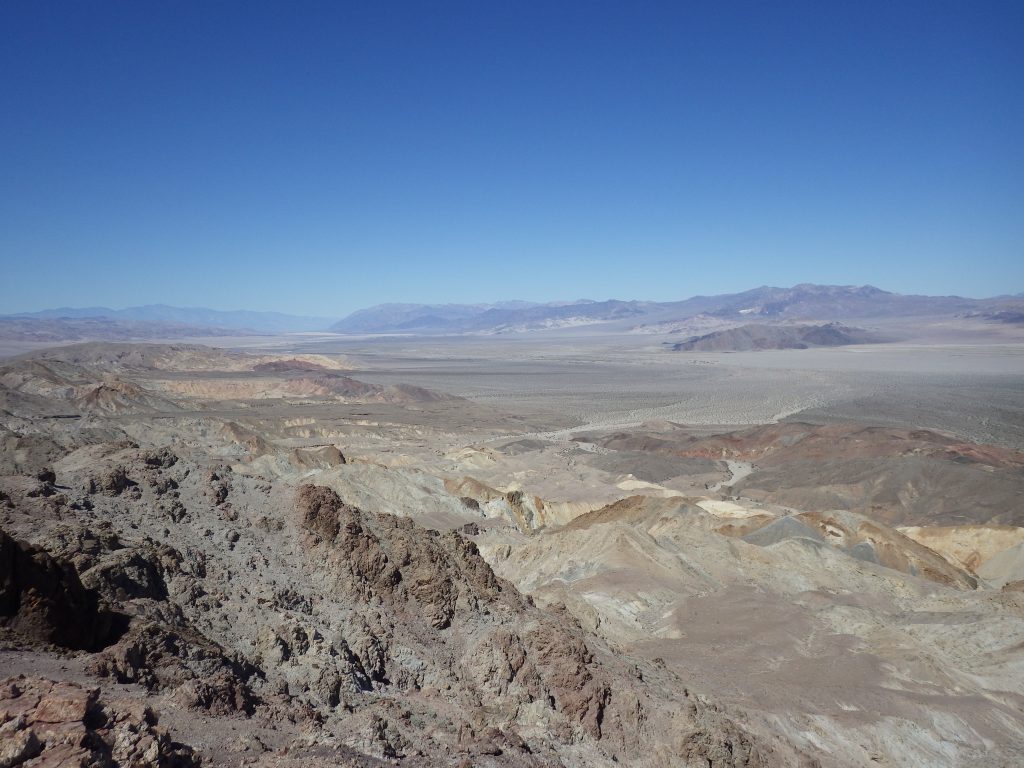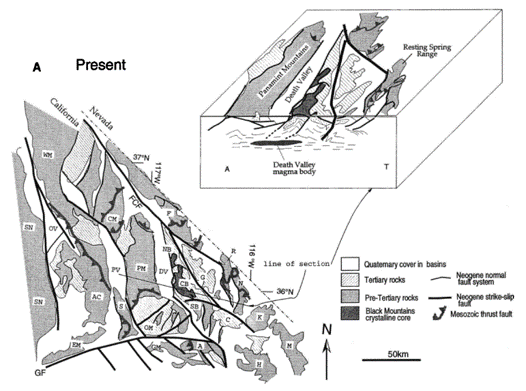Field Work


Lab Work

Modelling Work

Name: Death Valley
Location: California, USA
MEET Partner in contact with site: ULS
The Southern Death Valley is chosen as an analog model of the Soultz-sous-Forêts geothermal reservoir for six reasons:
1) the NH has virtually 100% outcrop exposure and no signs of meteoritic induced weathering
2) comparable tectonic settings between both sites
3) young age of the SDVFZ which rules out polyphase deformation and inherited structures
4) comparable reservoir size between both sites
5) presence of evaporites,
6) the DV region and adjacent valleys show evidence of anomalous geothermal gradient.
The proposed study is based on a robust petrographical and petrophysical analysis of encountered rocks combined to a precise photogrammetric based reconstruction of fracture network. Our study aims ultimately at a production of a coupled Thermo-Hydro-Mechanical-Chemical model to gain a realistic understanding of fractured granite reservoir type’s evolution.

Panoramic view of the Noble Hills range
The Death Valley region contains a complex structural and tectonic history which includes the overprinting of Mesozoic to early Cenozoic contractional structures by late Cenozoic extensional and transtensional features (Miller and Pavlis, 2005).
Along with the development of contractional structures the Mesozoic also marked the beginning of pluton emplacement in the Death Valley region as part of the larger arc magmatism of the eastern Sierran Arc system (DeCelles, 2004).
The late Cenozoic marked the beginning of extension in Death Valley. Following the middle Miocene it is generally agreed upon that the regional deformation shifted to a predominately transtensional regime and the opening of the main Death Valley as a “pull-apart” basin beginning at ~5 Ma (Pavlis et al., 2014).

Structural scheme of the Death Valley and Panamint Valley area and 3D block diagram of the Death Valley basin
To know more
DeCelles, P.G., 2004, Late Jurassic to Eocene evolution of the Cordilleran thrust belt and foreland basin system, western U.S.A.: American Journal of Science, v. 304, p. 105–168, doi:10.2475/ajs.304.2.105.
Miller, M.B., and Pavlis, T.L., 2005, The Black Mountains turtlebacks: Rosetta stones of Death Valley tectonics: Earth-Science Reviews, v. 73, p. 115–138, doi:10.1016/j.earscirev.2005.04.007.
Pavlis, T.L., Rutkofske, J., Guerrero, F., and Serpa, L.F., 2014, Structural overprinting of Mesozoic thrust systems in eastern California and its importance to reconstruction of Neogene extension in the southern Basin and Range: Geosphere, v. 10, p. 732–756, doi:10.1130/GES00993.1.
Serpa, L., and Pavlis, T.L., 1996, Three-dimensional model of the late Cenozoic history of the Death Valley region, southeastern California: Tectonics, v. 15, p. 1113–1128, doi:10.1029/96TC01633.
